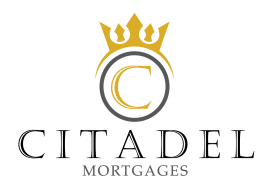If you’re a homeowner in Canada, you may have taken advantage of a home equity line of credit (HELOC) to access the equity in your property. HELOCs have become increasingly popular in recent years, offering homeowners a flexible way to borrow against their homes. However, as the draw period of your HELOC comes to an end, you may find yourself facing higher monthly payments or a larger outstanding balance. This is where refinancing your HELOC can help. In this comprehensive guide, we will explore the process of refinancing a HELOC in Canada, including what a HELOC is, when to consider refinancing, the benefits of refinancing, ways to refinance, the requirements, and alternatives to refinancing.
What is a HELOC and How Does a HELOC Work?
A home equity line of credit (HELOC) is a type of loan that allows homeowners to borrow against the equity in their homes. It functions similarly to a credit card, where you have access to a line of credit for a certain period known as the draw period. During the draw period, which typically lasts around 10 years, you can borrow and repay money as needed. You are usually only required to make interest payments during this period, although you can also make additional principal payments if you choose to.
Once the draw period ends, you enter the repayment period, which can last for another 10 to 20 years. During this period, you can no longer borrow money from the line of credit, and you must begin repaying the principal balance, along with interest, in regular monthly installments.
A HELOC is a secured loan, meaning it is backed by the equity in your home. This allows lenders to offer lower interest rates compared to unsecured loans. However, it also means that if you fail to make payments, the lender has the right to foreclose on your home.
When is a Good Time to Refinance a HELOC?
Refinancing your HELOC can be a smart move at various points during the repayment period. One opportune time to consider refinancing is when the draw period is coming to an end and you have built up a substantial outstanding balance. As you transition from interest-only payments to principal and interest payments, your monthly payments are likely to increase. Refinancing can help you lower your monthly payment or reduce the interest rate, making your payments more manageable.
Another factor to consider is the state of your credit score and income. If your credit score has improved since you first obtained the HELOC, you may be eligible for a better interest rate or more favorable terms. Additionally, keeping an eye on interest rate trends can help you make an informed decision. If HELOC rates are decreasing, you may be able to take advantage of lower rates through refinancing.
Why Should I Consider Refinancing a HELOC in Canada?
There are several reasons why you should consider refinancing your HELOC in Canada:
- Lower Monthly Payments: Refinancing your HELOC can help you lower your monthly payments by obtaining a lower interest rate or extending the repayment term.
- Reduced Interest Costs: By refinancing at a lower interest rate, you can save money on interest over the life of the loan.
- Debt Consolidation: If you have multiple high-interest debts, refinancing your HELOC can allow you to consolidate them into a single, more manageable payment.
- Access to Cash: Refinancing your HELOC can provide you with additional cash if you need it for home improvements, education expenses, or other financial needs.
- Improved Financial Flexibility: Refinancing can provide you with the opportunity to adjust the terms of your loan to better align with your financial goals and circumstances.
Ways to Refinance a HELOC in Canada
When it comes to refinancing your HELOC in Canada, there are several options to consider. Each option has its own advantages and considerations, so it’s important to evaluate which one aligns best with your financial situation and goals. Here are some common ways to refinance a HELOC in Canada:
1. Refinance with a New HELOC
One option is to refinance your existing HELOC with a new HELOC. This involves applying for a new line of credit with either your current lender or a new lender. The new HELOC would be used to pay off the outstanding balance on your existing HELOC. By refinancing, you can reset the draw period and potentially secure a lower interest rate.
It’s important to note that refinancing with a new HELOC may result in interest-only payments during the draw period, which can provide temporary relief from higher monthly payments. However, it’s crucial to develop a repayment plan to pay down the principal balance during the repayment period to avoid a large lump-sum payment at the end of the loan term.
2. Pay Off the HELOC with a Home Equity Loan
Another option is to pay off your HELOC with a home equity loan in Canada. A home equity loan, also known as a second mortgage, allows you to borrow a lump sum of money against the equity in your home. Unlike a HELOC, a home equity loan typically has a fixed interest rate and fixed monthly payments.
By using a home equity loan to pay off your HELOC, you can consolidate your debt into a single loan with a potentially lower interest rate. This can simplify your finances and provide more predictability in your monthly payments. However, it’s important to carefully consider the terms of the home equity loan, including any closing costs or fees associated with the refinancing.
3. Roll the HELOC into a Mortgage
If you have a mortgage in addition to your HELOC, you may consider refinancing both into a single loan. This option allows you to consolidate your mortgage and HELOC into one mortgage loan. By rolling the HELOC into the mortgage, you can potentially secure a lower interest rate and simplify your monthly payments.
However, it’s important to carefully evaluate the terms of the new mortgage. While you may benefit from a lower interest rate, you should also consider any closing costs or fees associated with the refinancing. Additionally, if you have a low interest rate on your existing mortgage, you’ll need to weigh the potential savings of refinancing against the loss of that favorable rate.
What are the Requirements to Refinance a HELOC in Canada?
To refinance a HELOC in Canada, you’ll need to meet certain requirements set by lenders. While specific eligibility criteria may vary among lenders, here are some common requirements to consider:
- Sufficient Equity:
Most lenders require you to have a certain amount of equity in your home to qualify for a refinance. Typically, lenders will lend up to 80% of the appraised value of your home. If your existing mortgage and HELOC exceed this threshold, you may find it challenging to be approved for a refinance. - Good Credit Score:
Lenders will review your credit score as part of the refinancing process. A good credit score, typically considered to be 670 or higher on the FICO scoring model, increases your chances of qualifying for a refinance. If your credit score is lower, you may still be able to refinance, but you may face a higher interest rate or stricter terms. - Debt-to-Income Ratio:
Lenders also evaluate your debt-to-income (DTI) ratio, which compares your monthly debt payments to your income. Most lenders prefer a DTI ratio below 43%. A lower DTI ratio indicates a lower level of debt relative to your income and can increase your chances of being approved for a refinance. - Proof of Income:
Lenders typically require documentation of your income, such as pay stubs or tax returns, to verify your ability to repay the loan. This is especially important if you’re self-employed or have non-traditional sources of income. - Property Appraisal:
A property appraisal may be required by the lender to determine the current value of your home. This is important for evaluating the loan-to-value ratio, which compares the loan amount to the appraised value of the property.
It’s important to note that meeting these requirements does not guarantee approval for a refinance. Each lender has its own underwriting guidelines and may consider additional factors when evaluating your application.
What are the Documents Required for Refinancing a HELOC in Canada?
When refinancing a HELOC in Canada, you’ll need to provide certain documents to support your application. While specific documentation requirements may vary among lenders, here are some common documents you may need:
- Proof of Identity:
You’ll need to provide a valid government-issued identification document, such as a passport or driver’s license. - Proof of Residence:
Lenders typically require proof of your current address, such as a utility bill or a lease agreement. - Mortgage Statement:
If you have an existing mortgage, you’ll need to provide a copy of your mortgage statement to show the outstanding balance and payment history. - HELOC Statement:
Similarly, you’ll need to provide a copy of your HELOC statement to demonstrate the outstanding balance and payment history. - Income Verification:
Lenders will require documentation to verify your income. This may include pay stubs, W-2 forms, tax returns, or bank statements. - Property Appraisal:
In some cases, a lender may require a property appraisal to determine the current value of your home. This is especially important if you’re refinancing a significant amount or if there have been significant changes in the property’s value since you obtained the HELOC. - Credit Report:
Lenders will obtain a copy of your credit report to assess your creditworthiness. It’s a good idea to review your credit report before applying to ensure its accuracy and address any potential issues that may affect your application.
These are general documents that are typically required for refinancing a Home Equity Line of Credit in Canada. However, it’s important to consult with your lender to determine their specific documentation requirements.
How Often Can I Refinance a HELOC in Canada?
In Canada, there are no specific limitations on how often you can refinance a HELOC. However, it’s important to consider the costs associated with refinancing. Each refinance comes with fees and closing costs, which can add up over time. It’s generally not advisable to refinance too frequently unless there are significant financial benefits or changes in your circumstances.
Before refinancing, evaluate the potential savings, taking into account any fees or costs associated with the refinance. Consider consulting with a mortgage professional to assess your specific situation and determine the optimal timing for refinancing.
What are the Alternatives to Refinancing a HELOC in Canada?
If refinancing is not an option or does not align with your financial goals, there are alternatives to consider. Here are some alternatives to refinancing a HELOC in Canada:
- Loan Modification:
Contact your lender to inquire about loan modification options. Not all lenders offer loan modifications, but some may be willing to adjust the terms of your HELOC to make it more affordable. This could involve lowering the interest rate, extending the repayment period, or adjusting the monthly payments. - Personal Loan:
Consider taking out a personal loan to pay off your HELOC. Personal loans typically have fixed interest rates and fixed monthly payments, providing more stability and predictability compared to a HELOC. However, keep in mind that personal loan interest rates may be higher than HELOC rates, and the loan amount may not cover the entire HELOC balance. - Sell Your Property:
If you’re unable to afford the payments on your HELOC, selling your property may be an option to consider. By selling your home, you can pay off the outstanding balance on the HELOC and potentially eliminate the financial burden.
It’s important to carefully evaluate these alternatives and consider their potential impact on your financial situation. Consulting with a financial advisor or mortgage broker in Canada can provide valuable guidance tailored to your specific needs.
Frequently Asked Questions
Q: Can I modify my HELOC to make it more affordable?
While not all lenders offer loan modifications for HELOCs, it’s worth reaching out to your lender to inquire about modification options. Loan modifications can involve adjusting the interest rate, extending the repayment period, or modifying the monthly payments to make them more affordable. Lenders may be willing to work with you to find a solution that helps you manage your HELOC payments.
Q: What is the difference between a HELOC and a home equity loan?
A HELOC and a home equity loan are both forms of borrowing against the equity in your home, but they work differently. A HELOC provides a line of credit that you can draw from as needed during the draw period, while a home equity loan provides a lump sum payment at closing. HELOCs typically have variable interest rates, while home equity loans often have fixed interest rates. The repayment terms also differ, with HELOCs typically offering interest-only payments during the draw period, while home equity loans require immediate repayment of principal and interest.
Q: Is it possible to refinance a HELOC if I have bad credit in Canada?
While having bad credit may make it more challenging to refinance a HELOC, it is still possible. Some lenders specialize in working with borrowers with less-than-perfect credit and may offer refinancing options. However, borrowers with bad credit may face higher interest rates or stricter terms. It’s important to shop around and explore different lenders to find the best options available for your specific situation.
Q: Can I refinance a HELOC if I have insufficient equity in my home?
Refinancing a HELOC with insufficient equity in your home can be difficult, as most lenders require a certain amount of equity to qualify for a refinance. If your existing mortgage and HELOC exceed the lender’s loan-to-value ratio requirements, you may find it challenging to be approved for a refinance. In such cases, it’s important to explore alternative options or work on building equity in your home before considering refinancing.
Refinancing your Home Equity Line of Credit in Canada can help you manage your monthly payments, reduce interest costs, and improve your financial flexibility. By understanding the options available, evaluating your financial situation, and meeting the lender’s requirements, you can make an informed decision about refinancing. Whether you choose to refinance with a new HELOC, pay off the HELOC with a home equity loan, or explore other alternatives, consulting with a mortgage professional can provide valuable guidance and help you navigate the refinancing process. Take the time to evaluate your options and choose the approach that aligns best with your financial goals and circumstances.
For further questions and assistance contact mortgage professionals in Canada such as Citadel Mortgages for mortgage advice and solutions.

Unexpected costs when buying a home in Canada
When buying a home in Canada, there are several unexpected costs that buyers should be aware of to avoid financial surprises. Some of the key

Considering An Early Mortgage Renewal
Why consider renewing your mortgage ahead of time? Well, one big reason is changes in interest rates. If rates drop, jumping on an early renewal

How to get a HELOC on an Investment Property in Canada
To get a Home Equity Line of Credit (HELOC) on an investment property, you need to follow these steps: 1. Know Your Finances: Estimate the

Expert Advice: Buying a House in Cash in Canada
In exploring the possibility of buying a house in cash in Canada, it’s essential to understand the various aspects that come into play. Here’s a

Average Down Payment for a House in Canada
According to the Canadian Real Estate Association, the average house price in Canada hit around $637,673 in August 2022. This means if you’re looking to

Assumable Mortgages: An In-Depth Look
Assumable mortgages are a unique financing alternative that could potentially save you thousands of dollars and simplify the home-buying process. But what exactly are they





